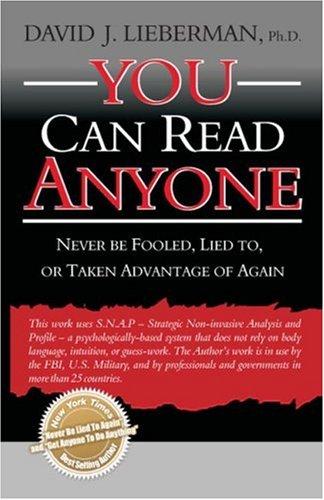I can read this book
3 stars
A quick read. I feel like trying to employ techniques to gauge whether someone is lying to you to be exhausting if you go through life using them all the time. Perhaps it's ultimately more useful to know of them in case anyone else who's read this book is trying to manipulate you.
More generally, the book is useful as a way of understanding you and how other people think. Part II is about how self-esteem really affects the way people behave, so understanding whether or not people like themselves will shed a light on any interaction. More importantly, for me, as I'm also going through life grappling with self-esteem issues, it helps to know how resolving them will also change my own interactions with others.
A couple of other notes: the writer uncritically leans on Meyers-Briggs and Maslow's hierarchy of needs here, whose validity have been called into question …
A quick read. I feel like trying to employ techniques to gauge whether someone is lying to you to be exhausting if you go through life using them all the time. Perhaps it's ultimately more useful to know of them in case anyone else who's read this book is trying to manipulate you.
More generally, the book is useful as a way of understanding you and how other people think. Part II is about how self-esteem really affects the way people behave, so understanding whether or not people like themselves will shed a light on any interaction. More importantly, for me, as I'm also going through life grappling with self-esteem issues, it helps to know how resolving them will also change my own interactions with others.
A couple of other notes: the writer uncritically leans on Meyers-Briggs and Maslow's hierarchy of needs here, whose validity have been called into question by others elsewhere. While it doesn't necessarily invalidate the entire book, it does remind us that this is one view of how humans work -- possibly narrowed by American or Western cultural norms -- and not necessarily a magical how-to guide reflecting a universal truth. As Lieberman himself disclaims early on, his research can only give you a statistical advantage, not a crystal ball. Context is everything. And unfortunately, in the real world, one does not have the privilege of running the same interaction hundreds of times to test the statistical edge.

